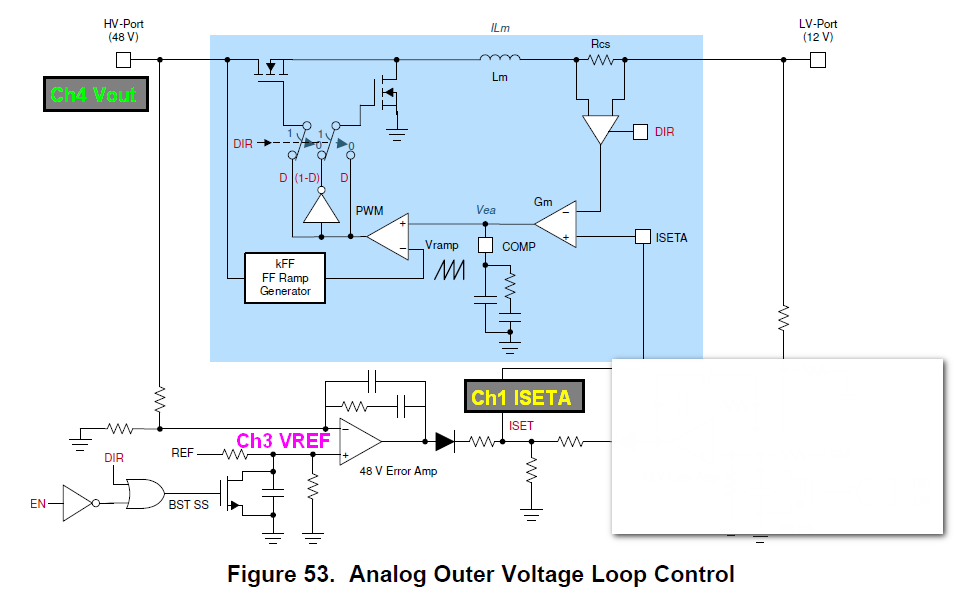Other Parts Discussed in Thread: LM5170
Dear Expert:
How to reduce the output voltage overshoot during LM5170 power-on?
I tried to modify the SS cap, the LM5170 comp compensation and boost mode voltage loop compensation, but no effective reduction.
I follow the LM5170 excel calculation to get the value of components (meet loop gain stable rule). While the Vout is set 48V, the max overshoot of vout is around 53.6V or higher.
Could you please provide the suggestion that reduce the overshoot?
Thanks.
Aska



